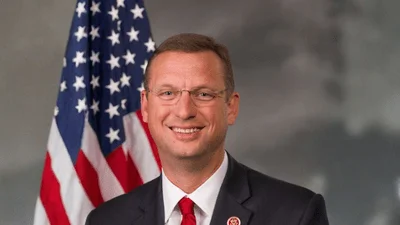Tom Vilsack Secretary of U.S. Department of Agriculture (USDA) | Official Website
WASHINGTON, September 10, 2024 - Agriculture Secretary Tom Vilsack announced today that the Biden-Harris Administration is investing $100 million in 21 new projects to expand work on the USDA Forest Service’s Wildfire Crisis Strategy. This initiative aims to reduce the threat of wildfire in high-risk areas across the country.
The new projects span 14 states and 18 national forests and are part of a broader $3.2 billion investment made possible through President Biden’s Inflation Reduction Act and Bipartisan Infrastructure Law.
“The challenging wildfires of this year have underscored the urgent need to continue to protect our communities and infrastructure by restoring forest health across the country,” said Secretary Vilsack. “We have already made incredible progress, but there is still much to be done. Today’s investment represents an important expansion of our Wildfire Crisis Strategy work to new areas and states.”
The Collaborative Wildfire Risk Reduction Program uses hazardous fuels funds from the Inflation Reduction Act to treat additional high-risk wildfire areas where national forests and grasslands meet homes and communities, known as the Wildland-Urban Interface. The program enables national forests, in collaboration with Tribes, communities, and partners in qualifying states, to build local capacity for projects aimed at reducing wildfire risk and improving forest health.
“There are 24 states that meet the criteria for this program, including 13 states in the South, Midwest, and East," said Forest Service Chief Randy Moore. "The internal competitive process and collaborative design of these projects allow National Forests and partners to demonstrate their ability to move forward quickly on wildfire risk reduction actions to protect lives and livelihoods across vast, shared landscapes.”
A full list of projects and qualifying states can be found on the program webpage.
This announcement is part of President Biden’s Investing in America agenda aimed at increasing resilience against catastrophic wildland fires while better supporting federal wildland firefighters. The Bipartisan Infrastructure Law allocated $1.4 billion for USDA Forest Service wildfire risk reduction funds. The Inflation Reduction Act provided an additional $1.8 billion aimed at reducing wildfire risks affecting neighborhoods, infrastructure, watersheds, among other benefits provided by forests. These investments aim to strengthen long-term fire preparedness efforts across states while supporting the wildland firefighter workforce.
In January 2022, the Forest Service launched its Wildfire Crisis Strategy with a goal of safeguarding communities by increasing hazardous fuels treatments designed to reduce wildfire risk. This strategy includes treating more than 1.5 million acres across 21 priority landscapes under the Wildfire Crisis Strategy which has begun reducing wildfire risks for approximately 550 communities along with protecting over 2,500 miles of high-voltage power lines and around 1,800 watersheds supplying drinking water nationwide.
The Bipartisan Infrastructure Law also established the Wildland Fire Mitigation and Management Commission tasked with making recommendations for improving federal policies related to mitigation suppression management concerning wildland fires within the United States In September last year this commission released a comprehensive report outlining recommendations towards enhancing national approaches towards dealing with wildfires; today's funding will advance many such recommendations outlined therein
USDA impacts American lives daily positively through various means Under Biden-Harris Administration USDA aims transforming America’s food system focusing resilient local regional food production ensuring access safe nutritious food building markets income streams using climate-smart practices historic investments infrastructure clean energy rural America committing equity removing systemic barriers creating representative workforce Learn more visit www.usda.gov





